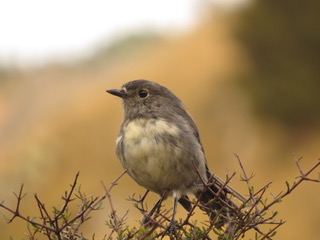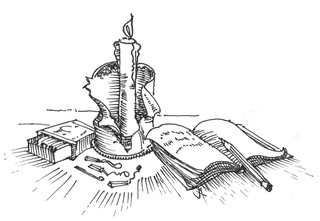DOC’s is due to topdress Ulva Island near Stewart Island with the deadly brodifacoum poison aiming to kill rats. Scientist Dr. Jo Pollard says DOC’s actions are negligent since previous DOC poisoning drops on the island, had devastating effects with several native bird species being slashed in numbers. Dr. Pollard’s paper quoting scientific research, details compelling arguments about the environmental damage, particularly to native birds that will occur through direct or indirect secondary poisoning.
The NZ government’s Department of Conservation (DoC) is planning to poison 269 ha Ulva Island, near Stewart Island, next month (July, 2023). Food baits poisoned with brodifacoum will be spread by helicopter across the island and its nearby rock stacks.
DoC is aiming to kill Norway rats (Rattus norvegicus).
The last time DoC poisoned Ulva Island, in 2011, devastating effects were recorded. Professor Ian Jamieson from Otago University had been carrying out a long-term study on a population of Stewart Island robins (Petroica australis rakiura). A third of them were killed in the poisoning (Masuda & Jamieson, 2013). The killing went on – months later, dead nestlings were found, apparently poisoned by invertebrates fed to them by their parents (Masuda et al., 2013).
The robins and other precious native birds had been introduced to Ulva Island after it had been declared “rat free” in 1997. The rats had been killed off using a network of bait stations, plus traps and poisoned maize. For many years afterwards, traps and bait stations were used to control invading rats, with about one caught per year, mainly in the wharf area (DoC, 2011).
Then in 2010, four rats were caught in the May/June trapping, followed by 70 rats in January/February 2011. At this, DoC shut the traps, then spent months planning aerial poisoning, which was eventually carried out in August and September (DoC, 2011).
Prof. Jamieson was no doubt suffering during 2011 – not only his robins but rare gems such as the semi-flightless saddleback had been put on the island, and DoC’s management was putting them in great peril. Firstly, rats – invasive, fast breeding, opportunistic feeders – were being allowed to multiply exponentially. Having no experience with predators, the naive native birds might be exceptionally vulnerable. And the whole place was to be poisoned. But there could be no arguing – DoC was a major funder of Jamieson’s and his university’s research.
Terrible effects of aerial brodifacoum poisoning on birds can only be expected. DoC has a solid history of avoiding monitoring poisoning impacts (Brown et al., 2015, Lethwick & Byrom, 2023; Whiting-O’Keefe & Whiting-O’Keefe, unpubl.). Nevertheless, recorded bird death tolls from aerial brodifacoum include 65% of robins, 35% of saddlebacks, 98 % of weka and 20% of kaka (DoC, 2011); over 2400 birds at Macquarie Island (Parks & Wildlife, 2014); and 26 species of birds at Rat Island, Alaska (Ebbert & Burek-Huntington, 2010).

South Island bush robin – photo Tony Orman
Brodifacoum doesn’t just kill birds and rats. Aerial poisoning of Fregate Island, Seychelles, was thought to have caused declines in two land snail species, one becoming endangered and the other probably extinct, leading to brodifacoum being labelled as a molluscicide (Gerlach, 2005). Poisoned baits killed Telfair’s skinks on Round Island, Mauritius (Hore & Hare, 2006). Due to its high toxicity to freshwater crustacean Daphnia magna, brodifacoum is rated highly toxic to aquatic organisms (USEPA, 1998).
DoC is legally required to preserve natural resources, defined under the Conservation Act (1987) as “plants and animals of all kinds, systems of interacting living organisms, and their environment.” Also, under the National Parks Act 1980, unique ecological systems “must be preserved as far as possible in their natural state.” (Ulva Island is part of Rakiura National Park.)
Ulva Island’s ecology is diverse and distinct, as demonstrated in a study of invertebrates living in ground litter, which found 62 different species, in communities that differed from the mainland (Michel et al., 2008). But DoC is happy to ignore ecology, as demonstrated profoundly when manager Brent Beaven claimed that poisoning of Ulva Island’s seven streams was OK because his fish traps, put in 2 of the streams, had “only caught freshwater crayfish” (Beaven, 2011). There are hundreds of animals in freshwater communities! (See www.biodiversity.govt.nz.)
Brodifacoum is persistent – staying for years in food chains, soil and sediment (Weldon et al., 2011). It is also very cruel – poisoned mammals undergo severe suffering lasting days to weeks (Beausoliel et al., 2010).
In contrast to DoC’s aerial poisoning is the rational approach: immediately reinstating ground control of the rats. The small size of the island, easy topography and existing control network all make for success. Norway rats prefer to live near water, in underground nests, which are connected by pathways scented with urine trails. So detector dogs and fumigation will be helpful.
Recently, high profile scientists have reviewed and trashed DoC’s wildlife management as being unscientific (Leathwick & Byrom, 2023; Margodt, 2022). (Byrom was a leading ecologist for Landcare; Margodt’s review was for the Jane Goodall Institute.) These reviews join previous work demonstrating the same thing (Brown et al., 2015, Pollard 2016; 2017; Whiting-Okeefe & Whiting O’Keefe, unpubl.). In the words of the psychiatrist visiting Fawlty Towers, “There’s enough material there for an entire conference!”
DoC’s actions need to be challenged legally, urgently.

References
Beausoliel, N., Fisher, P., Warburton, B., Mellor, D. 2010. How humane are our pest control tools? (09-11326). MAF Biosecurity New Zealand Technical Paper no: 2011/01. 149 pp.
Beaven, B., 2011. Statement of Evidence, Resource Consent hearing, Environment Southland.
Brown, K., Elliott, G., Innes, J. & Kemp, J., 2015. Ship rat, stoat and possum control on mainland New Zealand. An overview of techniques, successes and challenges. Department of Conservation report. 40 pp.
DoC, 2011. Application for a Resource Consent. Environment Southland File No. D036-091. 80 pp.
Gerlach, J. 2005. The impact of rodent eradication on the larger invertebrates of Fregate island, Seycelles. Phelsuma 13: 44-54.
Hoare, J.M. Hare, K.M. 2006. The impact of brodifacoum on non-target wildlife: gaps in knowledge. New Zealand Journal of Ecology 30 (2): 157-167.
Leathwick, J.R., Byrom, A.E., 2023. The rise and rise of predator control: a panacea, or a distraction from conservation goals? New Zealand Journal of Ecology 47 (1): 3515.
Margodt, K., 2022. The Ethical Cost of Predator Free New Zealand 2050: Suffering in the name of Conservation. Jane Goodall Institute.
Masuda, B.M., Jamieson, I.G., 2013. Response of a reintroduced bird population to a rat reinvasion and eradication. New Zealand Journal of Ecology 37 (2): 224-231.
Masuda, B.M., Fisher, P., Jamieson, I.G., 2014. Anticoagulant rodenticide brodifacoum detected in dead nestlings of an insectivorous passerine. New Zealand Journal of Ecology 38 (1): 110-115.
Michel, P., White, H., Dickinson, K., Barratt, B., Fitzgerald, M., Johns, P., Nunn, J., Eyles, A., Barker, G., Andrew, I. 2008. Invertebrate survey of coastal habitats and podocarp forest on Ulva Island, Stewart Island, New Zealand. New Zealand Journal of Zoology 35: 335-349.
Parks and Wildlife Service, 2014. Evaluation Report: Macquarie Island Pest Eradication Project, August, 2014. Department of Primary Industries, Parks, Water and Environment. Hobart Tasmania.
Pollard, J., 2016. Aerial 1080 poisoning in New Zealand: Reasons for concern. Researchgate 2016: Reasons for concern
Pollard, J., 2017. Response to the Department of Conservation’s reply to “Aerial 1080 poisoning in New Zealand: reasons for concern”Researchgate 2017: Reply to DoC
United States Environmental Protection Agency (USEPA). 1998. Reregistration eligibility decision (RED) rodenticide cluster. Prevention, Pesticides and Toxic Substances (7508W). EPA738-R-98-007.
Weldon, G., Fairweather, A., Fisher, P. 2011. Broadifacoum. A review of current knowledge. Department of Conservation Pesticide Information Reviews Series Dme No. DOCDM-25436. 73pp.
Whiting-O’Keefe, Q., Whiting-O’Keefe, P., unpublished. Aerial monofluoroacetate in New Zealand’s Forests: An appraisal of the scientific evidence. http://1080science.co.nz/wp-content/uploads/2016/06/Whiting-Okeefe-2.pdf

Dr Pollard might be a very intelligent and well informed person but she has no political influence.
The only people with political influence are the minority of active and infleuntial members and funders of the successful political parties.
The members of this minority decide which celebrity politicians will be chosen to represent them and be elected to serve them in the government.
These people with tyhe influence in the sucessful political parties are THE DECIDERS of government decisions and actions that effect the lives of everyone else.
These DECIDERS are the PLAYERS in the game of politics.
The rest of the people are spectators, commentators and critics who also pay for what the PLAYERS decide.
Each of us has a choice to become involved, active and influential in a successful political party and join the Deciders or just watch, comment on, complain about and pay for the game they play.
It is essential to comprehend the very root of this evil of universal broadcasting poison. At the base where livelihoods, careers, reputations, manufacture, plant, machinery,transport,& delivery; the driving round robin force is MONEY!!Just LIKE MOST HUMAN EVILS. the source is money. No use hacking at the branches the roots are sucking up the money to feed the evil.
C M Baycroft is correct. Get involved where decisions are made and policies are germinated.
Nevertheless a fine paper by Dr Pollard which shows DOC seems unable to understand or even acknowledge its past mistakes.
Do Ministers of Conservation understand. They should be watchdogs on the department.
Oh, I see by google, it’s Hon. Willow-Jean Prime, Member of Parliament for Northland, Labour Party, was appointed Minister of Conservation on 1 February 2023.
I wonder what she thinks of her department and its blunders?
The DoC were blowing their trumpet recently on how they caught a stoat on a predator free 500 hectare island in Fiordland yet they can’t catch a few rats on an Island ‘Ulva Island’ almost half the size with ease of access from Stewart Is. It’s quite obvious that the DoC hasn’t learned from past mistakes.
What show of predator free NZ by 2050, I would say none whatsoever.
DOC’s incompetence and blundering leave one speechless. As a conservationist and taxpayer, it leaves one angry.
Surely the Minister of Conservation can see the incompetence and take remedial action on behalf of taxpayers?
Do you expect doc to admit they have made mistakes?? Not until OUR Wonderful island is dead will they finally concede they have been in the wrong!!